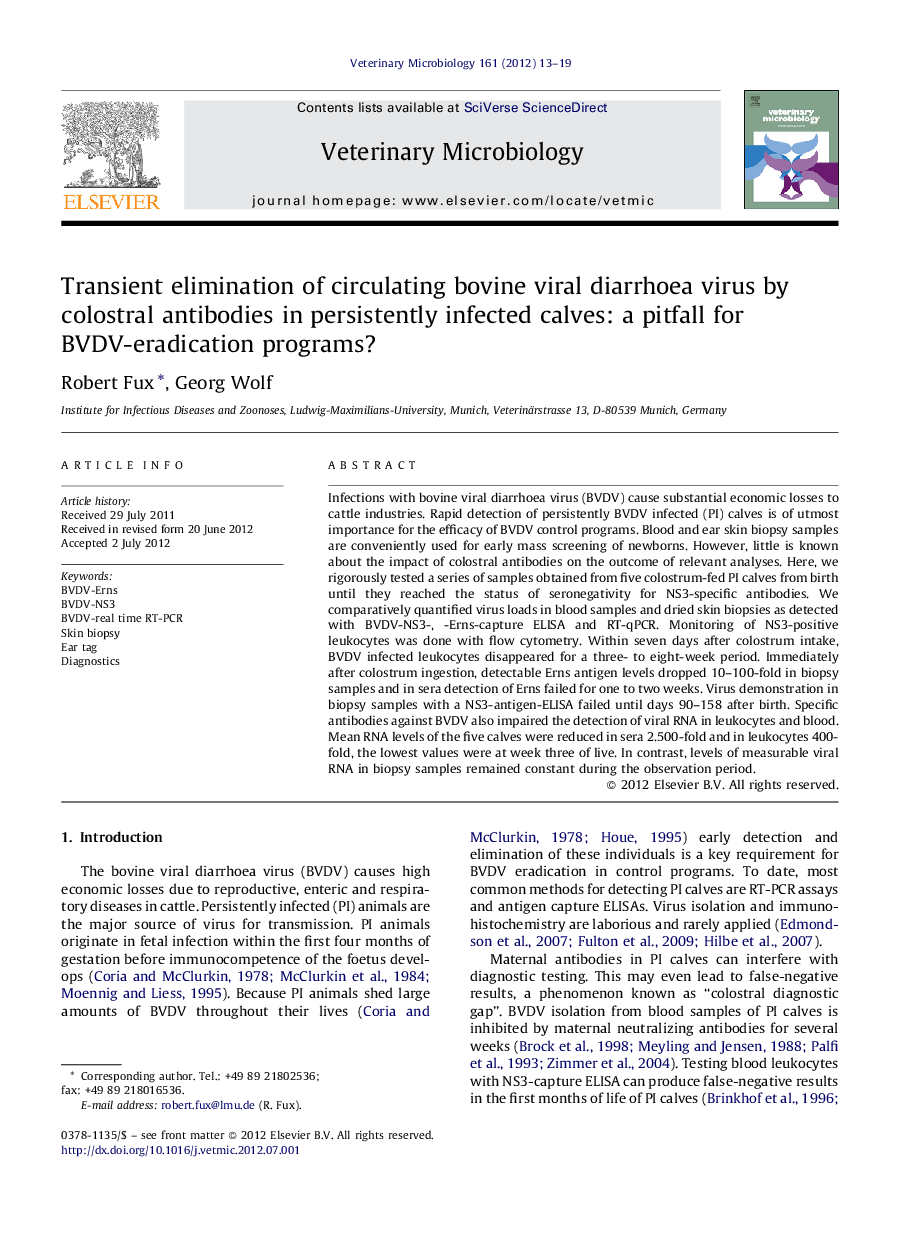| Article ID | Journal | Published Year | Pages | File Type |
|---|---|---|---|---|
| 2466974 | Veterinary Microbiology | 2012 | 7 Pages |
Infections with bovine viral diarrhoea virus (BVDV) cause substantial economic losses to cattle industries. Rapid detection of persistently BVDV infected (PI) calves is of utmost importance for the efficacy of BVDV control programs. Blood and ear skin biopsy samples are conveniently used for early mass screening of newborns. However, little is known about the impact of colostral antibodies on the outcome of relevant analyses. Here, we rigorously tested a series of samples obtained from five colostrum-fed PI calves from birth until they reached the status of seronegativity for NS3-specific antibodies. We comparatively quantified virus loads in blood samples and dried skin biopsies as detected with BVDV-NS3-, -Erns-capture ELISA and RT-qPCR. Monitoring of NS3-positive leukocytes was done with flow cytometry. Within seven days after colostrum intake, BVDV infected leukocytes disappeared for a three- to eight-week period. Immediately after colostrum ingestion, detectable Erns antigen levels dropped 10–100-fold in biopsy samples and in sera detection of Erns failed for one to two weeks. Virus demonstration in biopsy samples with a NS3-antigen-ELISA failed until days 90–158 after birth. Specific antibodies against BVDV also impaired the detection of viral RNA in leukocytes and blood. Mean RNA levels of the five calves were reduced in sera 2.500-fold and in leukocytes 400-fold, the lowest values were at week three of live. In contrast, levels of measurable viral RNA in biopsy samples remained constant during the observation period.
